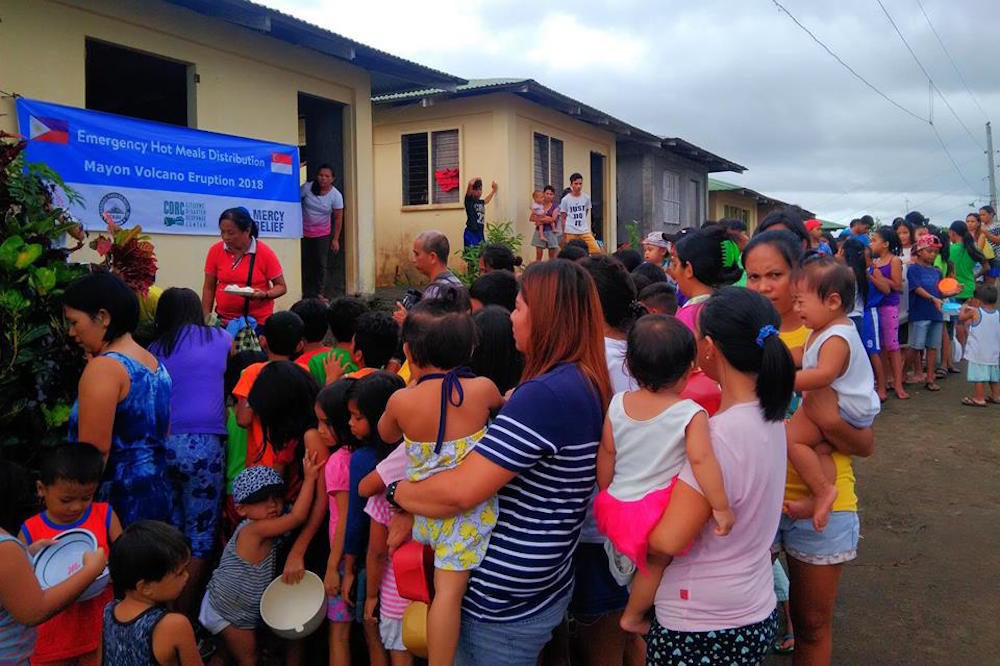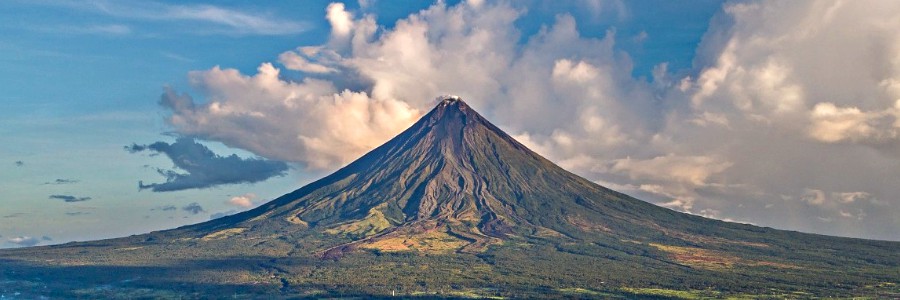For two weeks, it’s been spewing out giant clouds of ash and bursts of lava. It may look spectacular – but the erupting Mount Mayon volcano in the Philippines is causing chaos for thousands of children and their families.
Schools have been turned into shelters for most of the 85,000 or so people who have fled their homes for safer ground. Authorities are warning that the disruption in the central Albay province could go on for many weeks. “We’re gearing up for three months of emergency,” said Romina Marasigan of the country’s disaster agency.
Tens of thousands of children are having their education disrupted. Inside the “permanent danger zone” that spreads for five miles around the volcano are 49 schools with 49,000 students who have all had to be evacuated, according to OCHA (UN Office for the Coordination of Humanitarian Affairs).
There are 76 evacuation centres – most of them schools that have their lessons suspended to cope with the influx of people. Emergency shelters are being set up to try to free up the schools.
Some schools have been operating double-shift classes to take as many students as possible. But the education department said 287 temporary learning spaces are needed and funds are being fast-tracked. In emergency situations like this, education can give displaced or traumatised children a sense of structure and direction. A safe place to play and learn can help children heal by providing a return to familiar routines.

Food is distributed at Taladong Elementary School in Philippines because of the Mayon volcano emergency
As well as schooling, toys are being distributed to young children in evacuation centres as part of the play therapy sessions which are part of the psychological care. The charity World Vision is providing clean water and hygiene kits for children and families in the schools and evacuation centres.
“Classes were suspended in most parts of the areas surrounding Mayon volacano for two weeks,” Genesis Jeff Lamigo, Media and Communications Manager for World Vision Philippines, told Their News. “Some classes have resumed – but not in areas seriously affected by the volcanic activity and where schools were converted to evacuation centres.“
The regional government said just under 70,000 of the evacuees are housed in schools. The education department is working with local government units (LGUs) to provide alternative evacuation centres for evacuees.
Education Secretary Leonor Magtoli Briones said:
“We look forward to the time when LGUs will build permanent evacuation centres so schools need not be mobilised for this purpose and classes will not be disrupted.”
The department is also planning to stockpile learning resources near areas that are prone to natural disasters so that classes can resume quickly after an emergency.
Original source: Theirworld
Published on 30 January 2018

